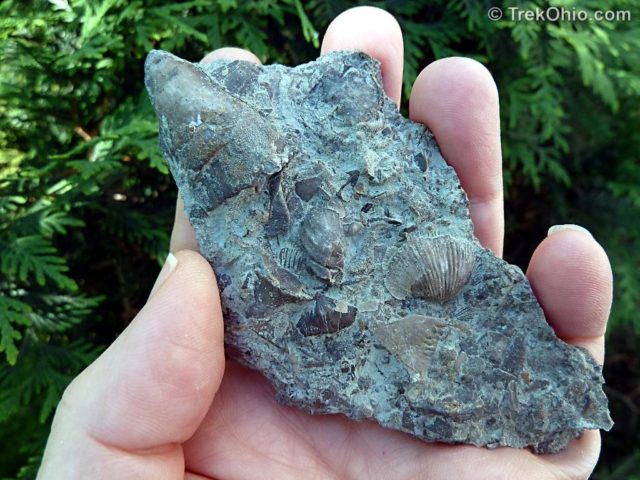
This past weekend, Bob and I went to Caesar Creek State Park to do a little hiking. However once we got there, we happened upon this amazing spillway that was just full of fossils.
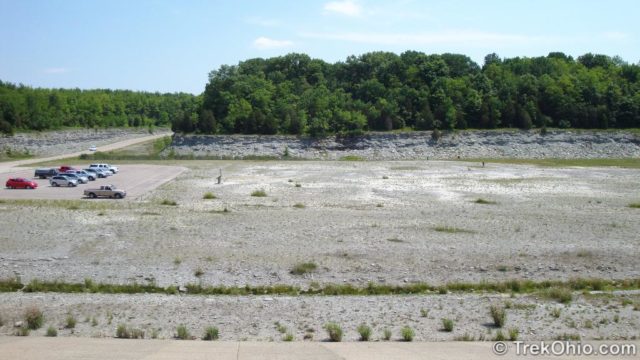
Hiking the Parks & Preserves of Ohio
Knox woods State Nature Preserve is a small, 30 acre woodland with two loop trails. However there are several connector trails to the adjoining Knox County park, Wolf Run Regional Park. Wolf Run is a 288 acre park with diverse habitats (woods, meadows, wetlands) and many facilities for guests. Besides having an enclosed dog park, guests are also allowed to take their leashed dogs on the trails at Wolf Run. Because the park and preserve are next to each other, you can go on a great hike that takes in both. I’m going to recommend starting at Wolf Run, passing through Knox Woods, and then returning to Wolf Run via a different trail.
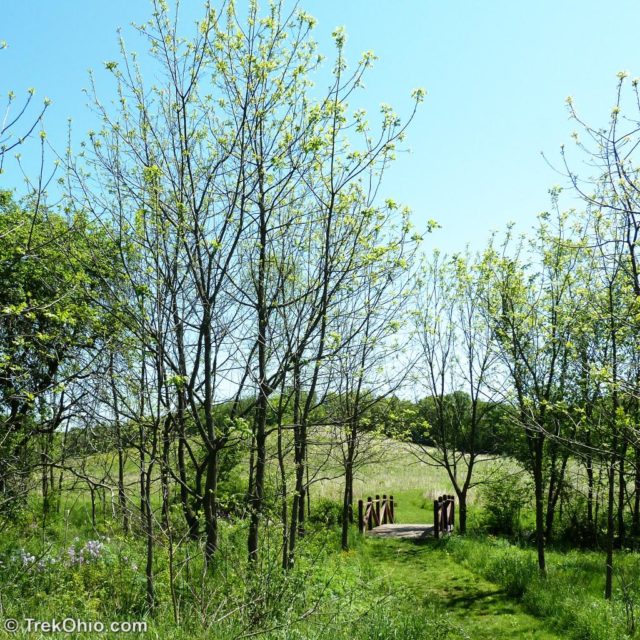
Continue reading “Knox Woods State Nature Preserve and Wolf Run Regional Park”
I have had the good fortune of vacationing in Canada on a couple of occasions, and one thing that became immediately clear to me is that Ohio has way more Canada Geese than Canada has. It’s possible to go an entire day in Canada and not even see a Canada Goose. Let’s see you manage that in Ohio!
Given that Ohio appears to be the center of the Canada Geese population, I suggest that we rename them Ohio Geese, or since Ohioans go by the nickname, “Buckeyes,” maybe we could call them Buckeye Geese.
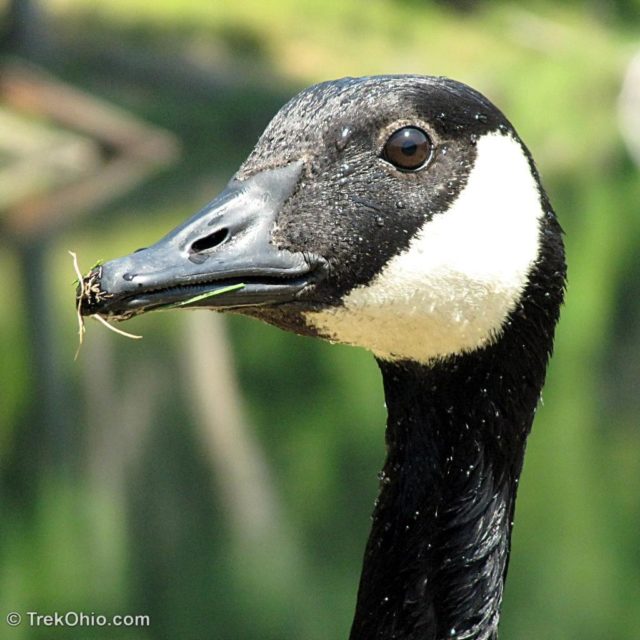
Wahkeena Nature Preserve is a hidden gem located in the SE corner of Fairfield County. The preserve lies just beyond the farthest point of glacial advance at the peak of the ice age. The word, “Wahkeena” is an Indian word meaning, “most beautiful.” Given the variety of flowering shrubs and plants (including eight varieties of native orchids), this seems a very fitting name. You will see a brown sign for Wahkeena on US 33 as you head into the Hocking Hills. Wahkeena is well worth a detour.
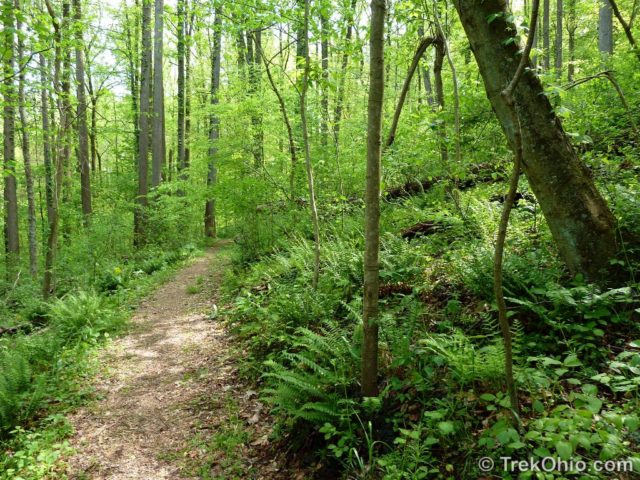
The Newark Earthworks were constructed about 2000 years ago by the prehistoric, Hopewell people. These are the largest, geometric earthworks in the world. To give you a better sense of the size and shape of these structures, it’s best to look at an aerial view. Since I can’t take aerial photos myself, I photographed some of the interpretive signs near the earthworks.
The plaque below shows the layout of the Newark Earthworks which occupy four square miles (10.6 square kilometers).
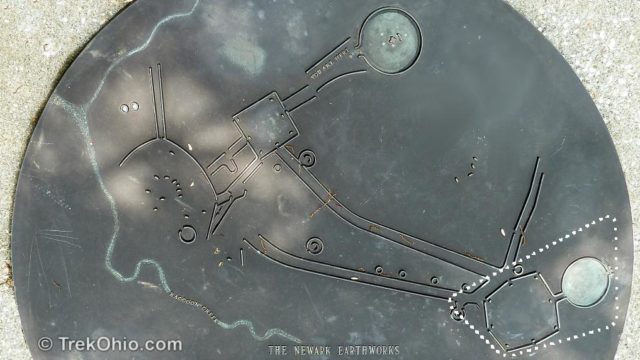
I made a dotted trapezoid around two structures in the lower right corner of the above plaque. These two structures (an octagon and a circle) make up the Octagon Earthworks portion of the Newark Earthworks. Below is an aerial photo showing just the Octagon Earthworks.
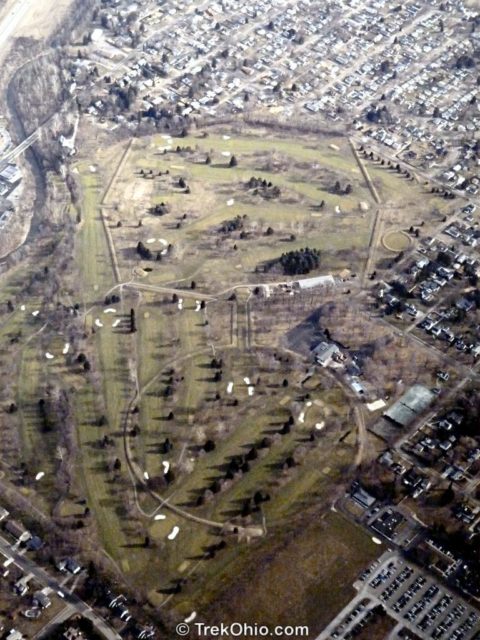
Continue reading “Newark Earthworks: The Great Circle and the Octagon Earthworks”
When other seeds germinate, the seedlings struggle to emerge into the sunlight, so they can photosynthesise and make their own nutrition. When a squawroot seed germinates, it squirms farther underground in search of its nourishment. It “feels around” in the dark until it finds the root of an oak or beech tree and latches on for dear life. For the rest of its life it will feed parasitically off these tree roots. The oak roots develop little, knobby protuberances where the squawroot has latched on, but other than that the oak trees don’t appear to suffer any ill-health as the result of their parasites.
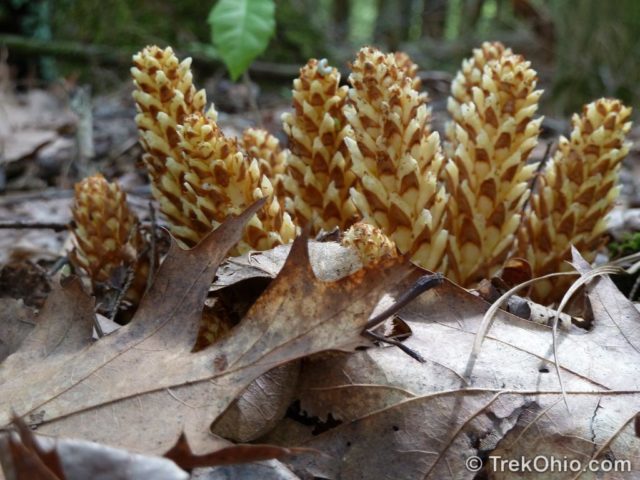
Continue reading “Squawroot: An underground plant without leaves or chlorophyll”
There are three different trail groupings at Blackhand Gorge State Nature Preserve, but for the longest time we only knew of the main parking lot and the trail head that leads off from there. So at the end of this post there’s a map and directions showing the location of them all. The icon used to locate the feature on the map is described in parentheses after each heading.
There is an old log cabin at the main parking lot across from the main trail.
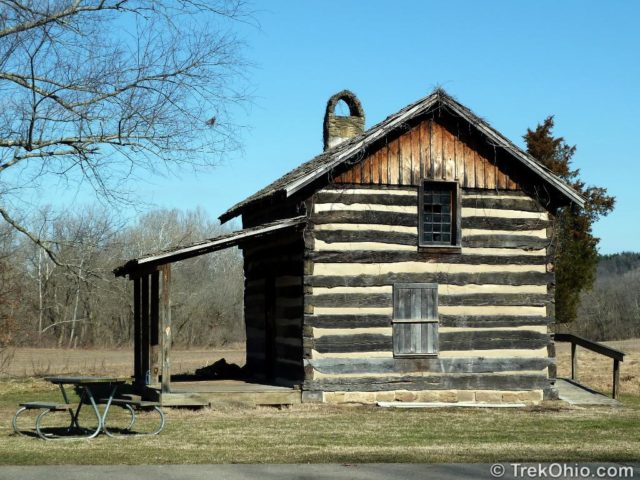
Gallant Woods Preserve is part of Delaware County’s Preservation Parks system. In contrast to many of the parks that we have discussed which are tourist attractions in their own right, Gallant Woods is more of a local community resource. It consists of 231 acres of mixed habitat including old growth woods, a wetlands woods, a meadow that’s being converted into prairie, and glacial moraine. There’s now 1.8 miles of developed trail with more trails planned for the future. The existing trails are all loops, so it would be possible for joggers to up their mileage by doing multiple loops.
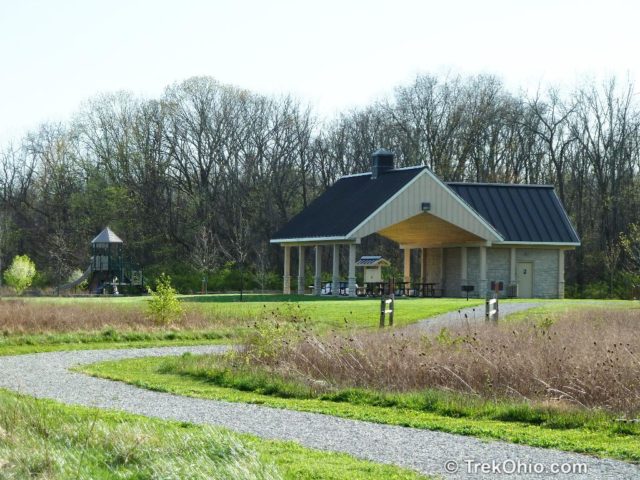
The glacial grooves on Kelley’s Island are a designated National Natural Landmark. They were formed during the last Ice Age about 18,000 years ago, and they are the world’s largest, known glacial striations. Typically glacial striations are formed when boulders and gravel are dragged across the bedrock under the immense weight of a glacier. Geologists rely on these natural features to determine the direction in which the now-melted ice once flowed. However according to the Ohio Department of Natural Resources, geologists now think that the glacial grooves in Ohio may have been formed by sand-charged water flowing at great speed and pressure through channels at the base of glacier. At the pinnacle of the last ice age, Kelley’s Island was underneath a mile of ice, so the pressure would have been incredible.
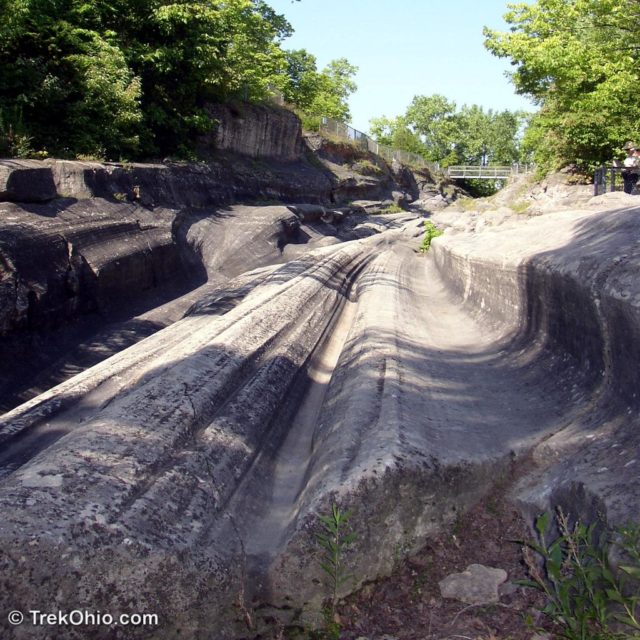
Quite a few of the parks where I hike have structures or other vestiges of days gone by. During our hike to Clear Creek Metro Park, there was a log cabin and a barn made of hand-hewn timber. For a while I had been thinking, “Wouldn’t it be fun to take my photos of these structures, and give them a vintage look?” So here is my first effort at doing just that.
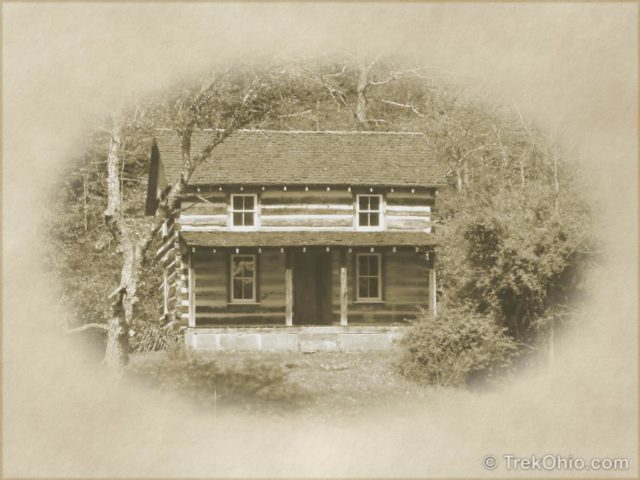
Continue reading “Pseudo-vintage photos of Clear Creek Metro Park”